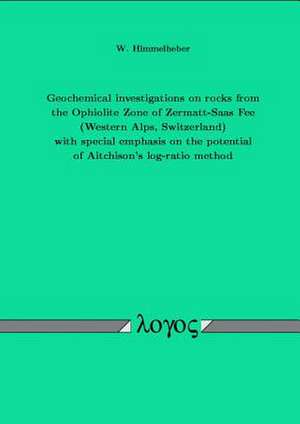Geochemical Investigations on Rocks from the Ophiolite Zone of Zermatt-Saas Fee (Western Alps, Switzerland) with Special Emphasis on the Potential of
en Limba Engleză Paperback
Preț: 443.30 lei
Nou
Puncte Express: 665
Preț estimativ în valută:
84.82€ • 88.57$ • 70.05£
84.82€ • 88.57$ • 70.05£
Indisponibil temporar
Doresc să fiu notificat când acest titlu va fi disponibil:
Se trimite...
Preluare comenzi: 021 569.72.76
